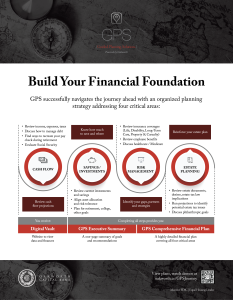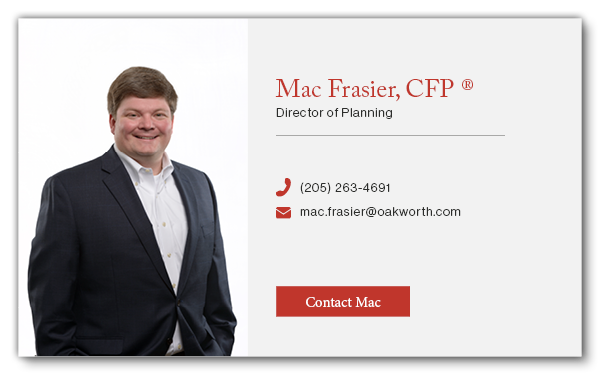
Every month of the year has a cause attached to it, and October is no different. These cause months are established to bring awareness and education on subjects that aren’t often top of mind. October is recognized as Financial Planning Month, which provides a great opportunity to get your finances in order before the busy holiday season. Each week during October, I will write a blog on one of the Four Cornerstones of Financial Planning, and address some basic financial planning topics.
The Four Cornerstones are as follows:
- Cash Management
- Savings/Investments
- Risk Management
- Estate Planning
Since this is the first week, a good place to start is by answering the question, “What is financial planning?” While the definition can vary based on whom you ask, I believe the Certified Financial Planner Board of Standard, Inc. (CFP® Board) does a great job defining it as looking at a person’s entire financial picture and advising them on how to achieve their short- and long-term financial goals, from saving for education and planning for retirement to effectively managing taxes and insurance. A financial plan should address all aspects of a person’s financial life.
Cash Management
“Cash flow drives everything.” I may not have been the first to say it, but over the years it has become one of my favorite phrases, when it comes to financial planning. Understanding and managing cash flow is a great starting point and that begins with creating a budget.
Budgeting
Creating a budget will help you better understand your cash flow and help you identify cash that can be used to save/invest for future goals, pay down debt or handle emergencies. If you are interested in learning more about creating a budget, be sure to read Budgeting and Cash Flow Management, which I wrote for Financial Literacy Month last April.
Debt/Key Financial Ratios
Once you have a budget in place, you may ask yourself, “Do I have too much debt?” or “Can I afford a new car?” While the answers to these questions are personal, there are some general rules of thumb you can reference.
- Basic Housing Ratio – This ratio is often used by mortgage underwriters to determine if you can afford a home. It is calculated by adding all your housing costs (principal, interest, property taxes and insurance) and dividing by your gross pay. The goal here is to keep your housing ratio to less than 28%.
- Debt to Income Ratio “DTI” – Here you’ll examine all your debt payments relative to your income. DTI is calculated by adding all your debt, including housing, car loans, student loans and credit cards and dividing by your gross pay. The goal for DTI is to maintain a ratio below 36%.
- 50/30/20 Budget Ratio – This is a good rule of thumb for budgeting. It states that your needs (rent/mortgage, debts, utilities, insurance, childcare) should be 50% of your spending; wants (entertainment, shopping, travel) should account for 30%; and savings (retirement, education, emergency fund) should account for 20% of your spending.
Emergency Fund
Another question that often comes up when discussing cash management is, “How much should I have in an emergency fund?” A good rule of thumb for an emergency fund is to have six months of expenses set aside for single-income households and three months for dual-income households. When determining how much to keep in an emergency fund, you should also look at what you have in taxable investments that could be liquidated if needed. For example, if you have $500,000 in a taxable investment account, you may not need as much in your emergency savings because you can always raise cash there if needed. Generally, the best place to keep an emergency fund would be in a savings account.
Guided Planning Solutions
Oakworth’s Guided Planning Solutions (GPS) can help identify some of the answers to these questions. To learn more about our process or download a sample of our plan, visit to our Guided Planning Solutions page.

Thank you for your time this week. I hope you found this blog informative. Next week, join me as I discuss Saving and Investing. In the meantime, should you have any questions, please feel free to reach out to your Oakworth Client Advisor.

This document is being provided for informational and educational purposes and is not meant to be taken as specific advice. Oakworth Capital Bank does not provide tax or legal advice. All decisions regarding the tax and/or legal implications of these strategies should be discussed with your tax and/or legal advisors before being implemented.


